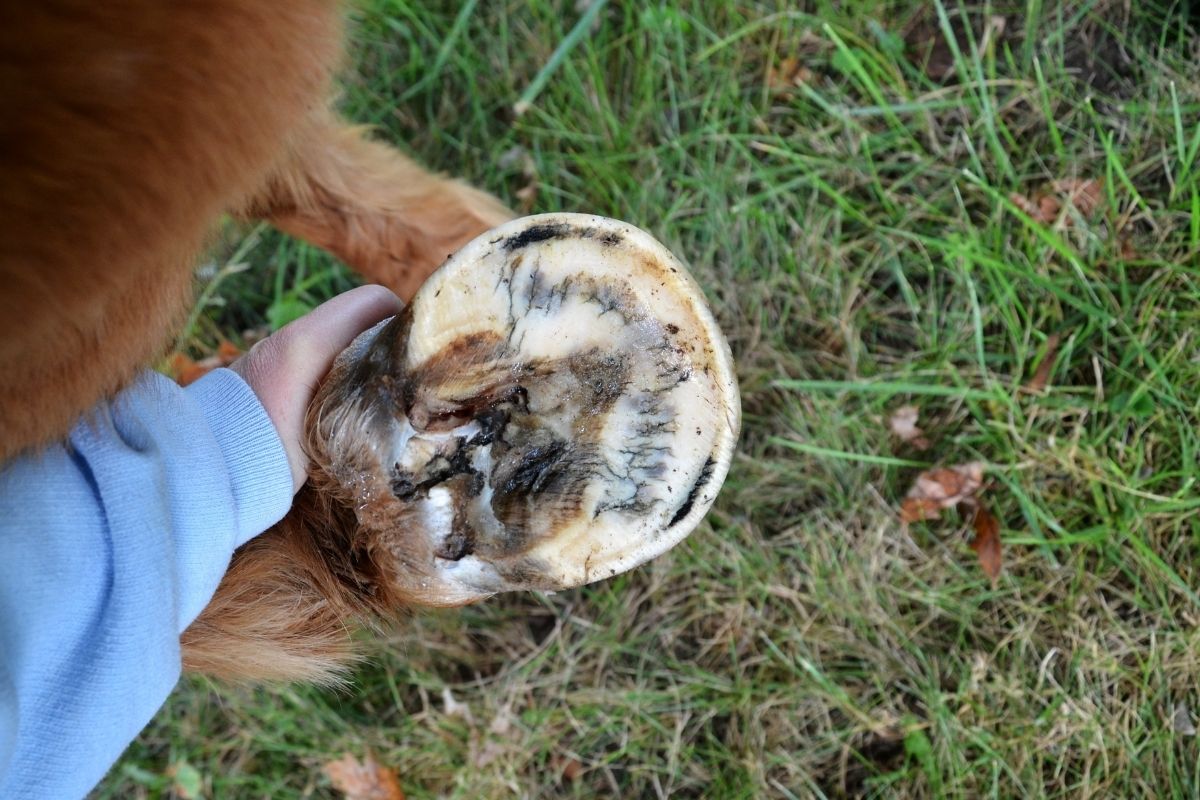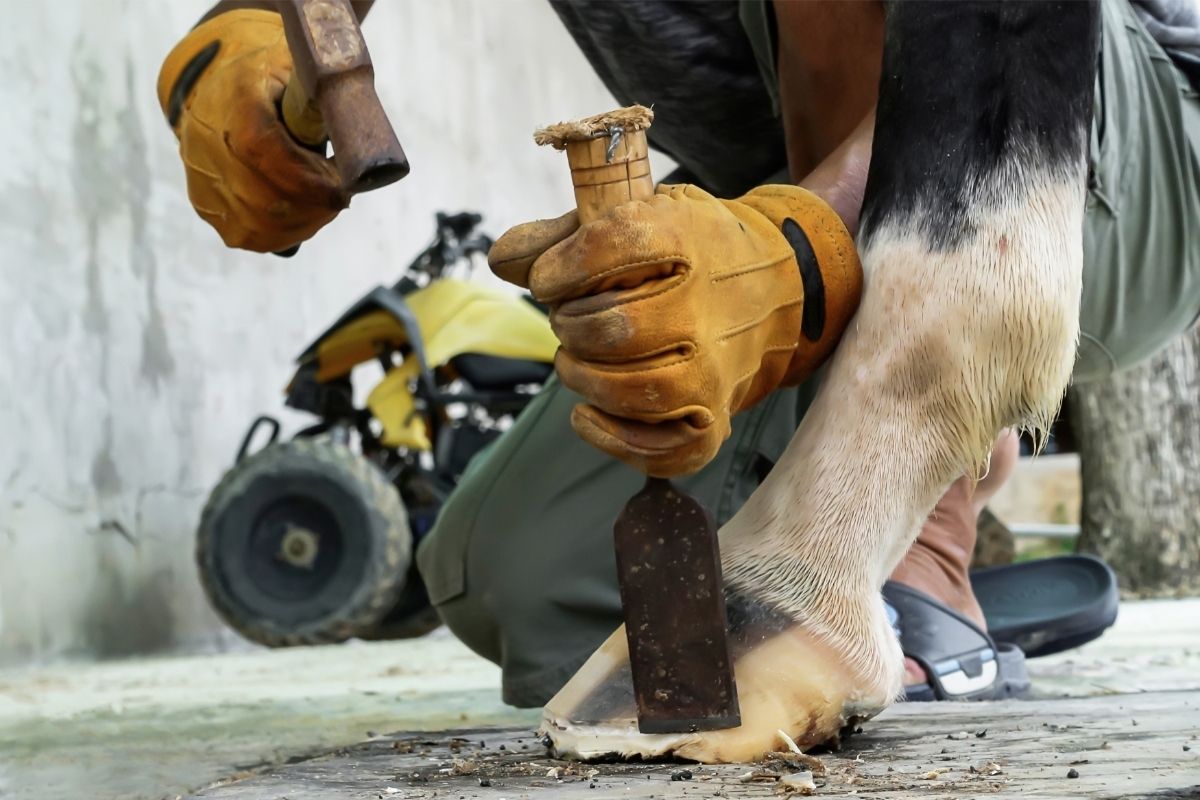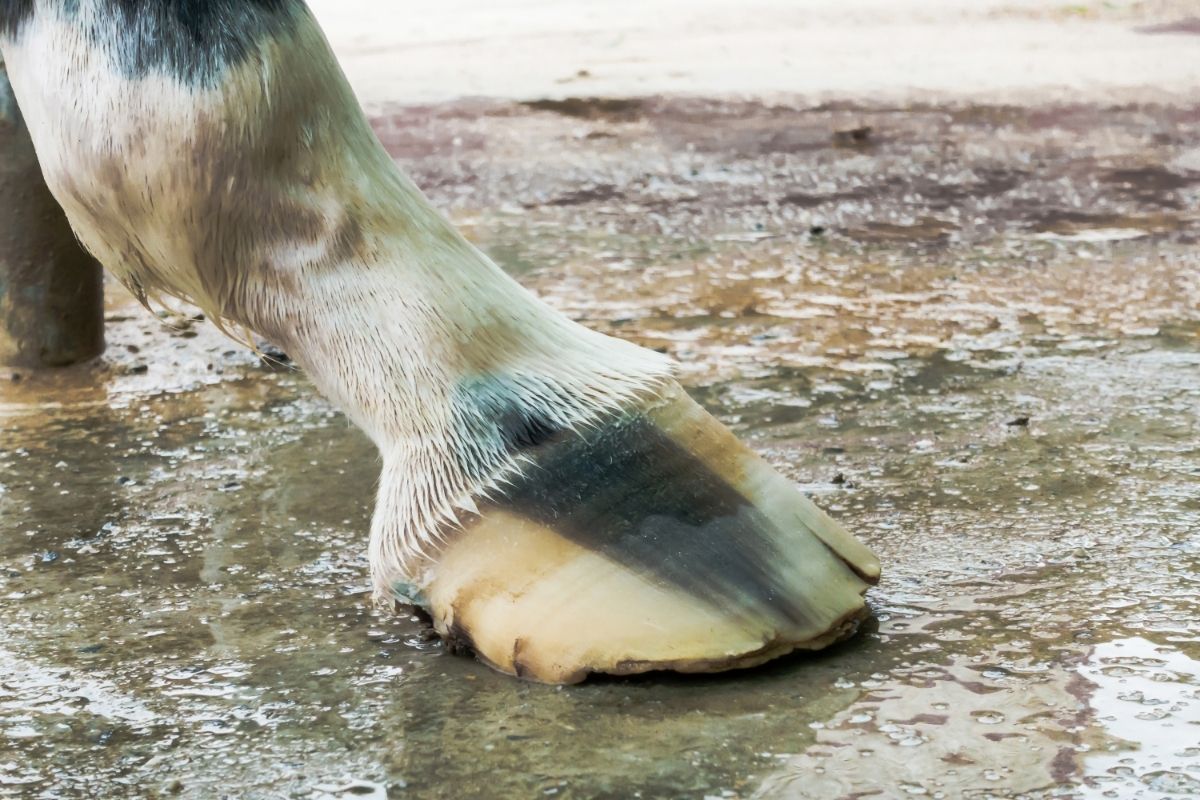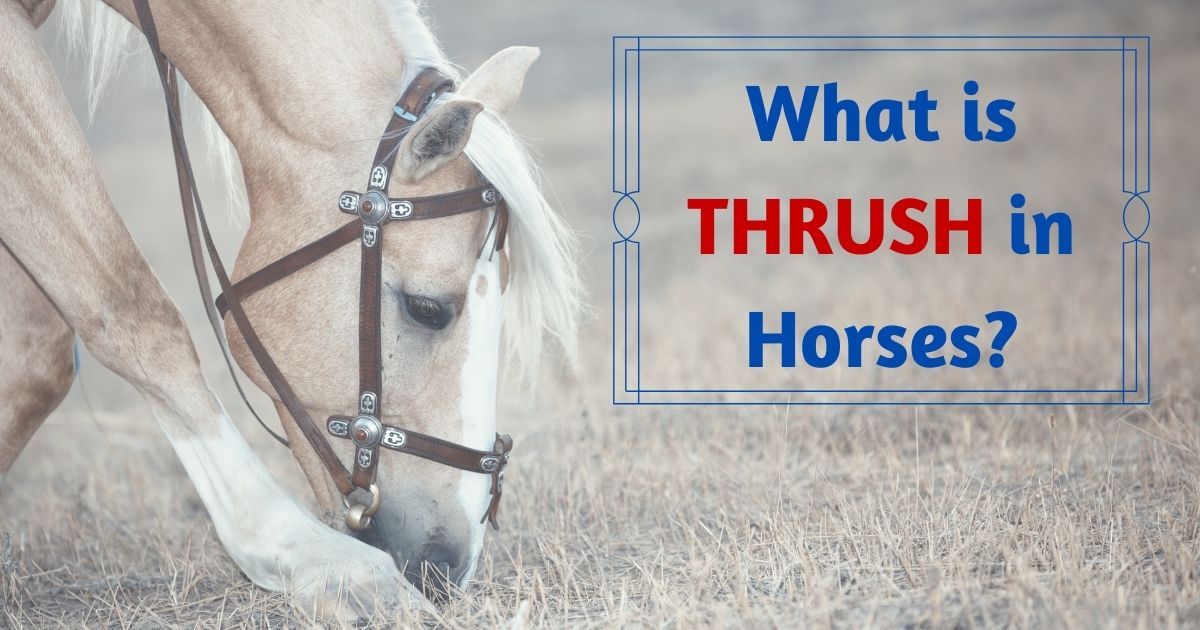What is Thrush in Horses?
You see the word ‘thrush’ online or hear your farrier and horse-enthusiast friends talk about thrush, but do you know what is thrush in horses?
Thrush is either a bacterial or fungal infection of a horse’s frog (a triangular structure located on the hoof’s underside). The infection is commonly found in the central sulcus (The groove in the middle of the frog) and lateral sulcus (the grooves on either side of the frog).
The Causes of Hoof Fungus in Horses
Previously thrush was identified as a fungal infection. However, it is now understood that the condition is more of a bacterial infection. Although many different bacterial species may be involved, an anaerobic bacterial species, Fusobacterium necrophorum, is the primary pathogen responsible for this condition.
Still, fungus species can occasionally be the cause of thrush.
The following factors may facilitate a bacterial or fungal growth on the frogs of horses:
- Have a deep narrow frog sulci due to an extended heel conformation.
- Live on a moist, damp, dirty, soil ground (dirty living environment).
- Inactive.
- Overweight or heavyweight.
- Overgrown or poorly trimmed hooves.
- Constant hoof pads wearing.
- Poor hygiene practice.
- Warm wet weather (e,g. end of winter or spring)
All types of horses can develop thrush. However, some breeds may be more susceptible to it due to their anatomical features.

How is Central Sulcus Thrush Diagnosed in Equines?
Physical examination would reveal the typical clinical signs of central sulcus thrush: odor from the frog, discoloration of the central sulcus and the surrounding tissues of the hoof, and a black-colored tar-like discharge originating from the central sulcus.
The affected horse may be lame or not and would likely show some signs of discomfort whenever pressure is applied onto the frog. Therefore, veterinary assessment, together with clinical signs and the relevant history, are required to confirm the extent of the condition.
Treating Horse Hoof Rot
The treatment focuses on healing the infection and correcting the underlying issue/issues.
The affected horse should be moved to a dry clean environment, and the foot should be cleaned daily.
To optimize the healing process, a veterinarian (or a farrier) may trim away any necrotic or damaged/infected tissue. In addition, the horse may be prescribed veterinary medications such as analgesics and antibiotics.
Daily cleaning involves picking up the hoof and removing dirt and necrotic materials from the frog sulcus, gently scrubbing the affected area with warm wet swabs (or a soft brush) soaked with diluted iodine solution, and pat dry thoroughly with clean swabs afterward.
If the horse is on a topical medication that must be applied to the affected area, this must be done on a clean, dry frog after the daily cleaning.
The veterinarian may recommend the horse to be vaccinated against Tetanus if the vaccination status is not current as Clostridium tetani (spore-forming bacterium responsible for Tetanus infection) found in the soil can enter the body of the horse through the infected frog.
How to Prevent Severe Thrush in Horses?
- Good sanitation/hygiene practice.
- Regular foot care and inspection by a farrier or by a veterinarian.
- Daily physical examination/check by the owner.
- Daily cleaning of the hooves.
- Gentle with hoof picking.
- Balanced diet.
- Regular exercises.
- Create or reinforce drainages around the paddock, the stable, and the yard for the wet season.
- Enhance stable ventilation.
- Take shoes off in the wintertime to allow natural movement of the hooves.
Precautions Against Thrush in Horses
Although thrush is not zoonotic, it is strongly recommended that anyone handling the affected area wear personal protective equipment (PPE) such as latex gloves and clean the hands afterward to prevent contaminating the affected area and contracting any undesired pathogens.
Do not apply an antiseptic or a disinfectant that is not approved for use on the body surface and wounds. If applied to the affected areas, body-unfriendly products can be caustic and painful, especially if the infection has spread into wide areas (tissues).
Any product to be applied on the affected site must be approved by a veterinarian first.
It is a condition that can inflict pain in horses. Therefore make sure to handle the area gently and with care. Also, people involved in handling/treating the horse need to be reminded about the safety around horses as horses can react to pain in ways that can be dangerous and unsafe for people surrounding the horse.

How do I Know if My Horse Has Thrush?
There are several telltale signs of thrush that owners may notice at home before contacting a veterinarian to confirm:
- Pungent, odorous black discharge in the affected sulcus of the frog.
- Necrotic tissue in the affected area.
- Painful/sensitive when the affected frog is pressed, or hoof is picked.
- A swelling of the distal (lower) limb in a severe infection.
- Lameness.
- Lethargy.
Does Thrush Hurt a Horse?
Most horses with mild thrush may still be bright and able to walk without any lameness. Thrush can however spread into more sensitive tissue in severe infection and causes rots and necrosis.
Pain level increases as the infection become more severe. The horses would likely display discomfort, lameness, and visible pain responses when manipulated by the affected frog or the surrounding region.

The Recovery and Prognosis of Thrush in Horses
Thrush is an infection that has a good prognosis for complete recovery with appropriate treatments and correcting the underlying (causal) issues. Thrush indiscriminately affects all types of horse, but some breeds are more prone to it due to their physical characteristics.
Early detection would lead to faster recovery similar to many other bacterial or fungal infections. Therefore, it is advantageous to know the symptoms/signs common in the affected horses and environmental conditions that are favored by the pathogenic species.
History, clinical signs, and veterinary assessment would confirm the diagnosis and pinpoint the cause of the infection, which the treatment plan would be based on.
Generally, the treatment will usually be required for seven-14 days. As mentioned earlier, the prognosis is relatively good. However, horses with a severe infection may require further, more extensive treatment to control the condition and resolve the damaged tissue.
Thrush is a preventable disease with good husbandry practice and regular body/health checks (by owners, farriers, and veterinarians).
